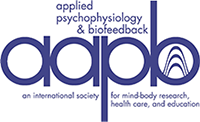Quantitative Surface Electromyography: Applications in Neuromotor Rehabilitation
Surface electromyography holds great potential in helping patients recover from injuries that result in motor impairments. To be able to assist the patient, the clinician must consider research obtained from the study of implicit/explicit learning, contextual interference, and basic learning theory. Quantitative surface electromyography (QSEMG) is a technique that is constructed around this basic research in order to present the optimal learning environment for the patient.

RMS SEMG of L/R quadriceps, set to be above threshold.

RMS SEMG of L/R upper thoracic, set to be within a threshold range.

QSEMG representing the time during the session that all targeted sites were meeting the threshold.

RMS SEMG of left gluteus maximus, set to be at or above threshold.

QSEMG, showing times that all targeted sites met the threshold goals.

RMS SEMG of L/R thorocolumbar, set to be within a threshold range.

RMS SEMG of left adductor, set to be at or above threshold.

RMS SEMG of left hamstring, set to be below threshold.

RMS SEMG of left medial quadriceps set to be above threshold.

RMS SEMG of left lateral quadriceps set to be below threshold.

Contributor Notes
